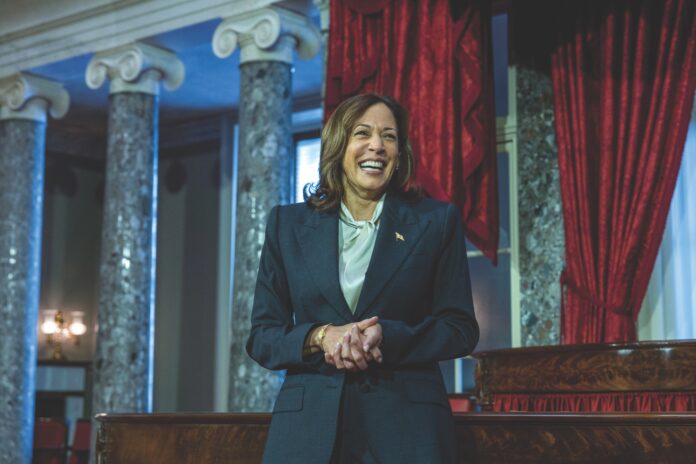While the financial sector at large frets over a new round of recession-fueled chaos, SBA lenders are enjoying a return to normalcy in the New Year.
The Small Business Administration issued $25.7 billion in loans through its SBA 7(a) program last year, the organization reported in December, a significant decrease from the $36.5 billion issued at the height of the pandemic in the 2021 fiscal year. The year still places second overall, edging out the previous second-place record holder 2017, when $25.5 billion in loans were issued.
Despite the downturn, experts say lenders and their clients have a positive outlook heading into this year and are largely unshaken by near-universal reports of recession.
A Bank of America report released in October indicates that 66% of small businesses interviewed were expecting revenues to increase during the next 12 months, a seven-year high for the annual report. More than half plan to expand their business, according to the report, and 83% plan to obtain outside funding. In the event of a recession, 77% of respondents were confident their business is equipped to survive.
Peter Drake, senior vice president and business development officer of Bank of America’s small business program, said Los Angeles continues to be a tremendous market for expanding small businesses, noting the bank is seeing a steady volume for demand in the New Year.
“It’s certainly as strong as it was at the same time last year. This is because SBA products continue to be a relatively affordable financing option for clients with attractive amortization terms,” said Drake. “We are seeing SBA demand (…) in working capital, equipment needs and taking advantage of section 179, and certainly commercial property.”
Clients continue to want to buy commercial real estate, Drake said, “but the challenge in L.A. remains the limited supply for sale that meet their needs.”
With small businesses feeling emboldened, banks and other traditional lenders are following suit. Lenders say they’re deepening their roots in diverse, historically underserved communities and expanding their fintech capabilities to make their programs more accessible than ever.
Catherine Jooyan, senior vice president and SBA regional manager for California at U.S. Bank, said that customers still value the in-person approach, but have grown accustomed to digital options over the course of the pandemic.
Jooyan noted U.S. Bank’s significant expansions across the West Coast, most notably through its purchase of the national MUFG Union Bank in December, an acquisition that added more than 1 million consumer customers and approximately 190,000 small-business customers to the bank’s roster.
“We have dramatically increased our use of digital tools to interact with customers, making the process faster and easier for them,” Jooyan said. “We now use a virtual conferencing program that allows our bankers to see exactly how our customers are using our digital applications and work with them to complete the process. We are using technology to help our customers navigate the process faster and more efficiently.”
Fintech lenders?
As traditional lenders expand on their digital offerings, the federal government is seeking to expand its lender base through digital competitors. The SBA proposed new rules and to lift a licensing moratorium that would allow fintech startups and other nontraditional lenders to offer loans through the 7(a) program. The push for the rules change has been led by Vice President Kamala Harris, who said it would be a boon for the small business ecosystem in underserved communities that have “struggled to keep up with better funded businesses and entrepreneurs in more prosperous communities.”
“Entrepreneurs of color regularly report being turned away by traditional financial institutions for loans at higher rates than their white counterparts,” Harris said in an October news release on the proposal. “And the community lenders committed to filling that gap similarly report that shortfalls in capital and technical capacity limit their ability to invest in the communities that need them the most.”
Noting many of these lenders provided key financial support via emergency loans during the pandemic, the SBA wrote in a news release accompanying the proposed rule change that it would expand small-business lending “particularly in smaller-dollar and underserved markets where borrowers are most acutely shut out of current lending.”
The proposal has faced opposition from trade groups associated with banks and other traditional lenders, including the National Association of Government Guaranteed Lenders. The organization’s president and chief executive, Tony Wilkinson, says the entities that would gain 7(a) lender status under the proposal lack the regulatory framework necessary to make it work. The SBA has not only shown a lack of interest in ensuring such a framework is put in place, Wilkinson said, but it’s actually doing what it can to chip away at the rules that traditional lenders have long abided by, to the benefit of new fintech lenders.
“If (the SBA allows fintechs) without limitations or a rule book – except the new overarching principle of ‘just do what you would otherwise do’ – then the current risk tolerance in SBA’s existing portfolio will increase drastically, along with losses. When performance worsens, programmatic costs increase, which means fees hike up on the very borrowers we’re trying to help,” said Wilkinson. “And there’s a real chance that Congress would be forced to get involved to raise maximum allowable fees set in law or find appropriations to fund the rising cost of the program.”
Wilkinson said lending trade groups like NAAGL aren’t necessarily opposed to fintechs joining the lending base, but as SBA loans are backstopped by taxpayer money, he said they should be held to the rules that have protected the integrity of the system.
“If we add lenders – and possibly high-volume lenders – who have a model for high losses, it impacts the costs for everyone else,” said Wilkinson.

